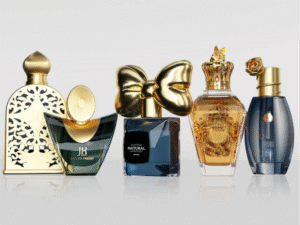The quality of liquor doesn’t just depend on its ingredients or distillation process; storage plays a vital role in preserving its flavor, aroma, and overall appeal. One of the most critical yet often overlooked aspects of liquor storage is bottle design. From the materials used to the shape and closure technology, every aspect of a liquor bottle impacts the quality of the product it contains. This article dives deep into the science of liquor storage and explores how thoughtful bottle design helps maintain liquor quality over time.

1.Understanding the Basics of Liquor Storage
Why Proper Liquor Storage Matters
Liquor is a delicate product, and its quality can degrade if not stored correctly. Poor storage practices can lead to oxidation, light damage, or temperature-induced spoilage, significantly altering the taste and aroma. For instance, whiskey left in direct sunlight for prolonged periods can lose its complexity, turning flat and less enjoyable.
Facts About Liquor Storage:
- Spirits with higher alcohol content (above 40%) are less prone to spoilage but can still lose flavor if exposed to air.
- Light-sensitive liquors like vermouth and liqueurs degrade quickly under UV exposure.
- Proper storage extends the shelf life of both opened and unopened bottles, ensuring consistent quality.
Key Factors That Influence Liquor Quality During Storage
1. Light Exposure
UV rays can penetrate bottles, especially if they’re made of clear glass, leading to chemical reactions that alter the liquor’s taste and color. This is why many premium liquors come in tinted bottles.
2. Temperature Fluctuations
Extreme heat or cold can cause the liquid inside to expand or contract, potentially damaging the seal and allowing air to seep in. Ideal storage temperatures range between 55°F and 65°F.
3. Air and Oxidation
Once a bottle is opened, exposure to air begins the process of oxidation. Over time, this can result in the loss of key flavor notes. Using airtight closures can significantly slow this process.

2.The Role of Bottle Design in Liquor Storage
Materials Used in Liquor Bottle Design
Glass Bottles
Glass is the most popular material for liquor storage due to its non-reactive nature, which ensures that the flavor remains unaltered.
Advantages of Glass Bottles:
- Non-porous and impermeable to oxygen.
- Available in various finishes, such as clear, frosted, and tinted, to cater to branding and storage needs.
Alternatives to Glass
While glass dominates, some brands experiment with plastic or metal bottles. However, these materials can impart undesirable flavors over time and are less effective at preserving quality.
How Bottle Shapes Affect Storage Quality
Bottle shapes aren’t just aesthetic—they serve functional purposes too.
Long-Neck Bottles vs. Wide-Mouth Bottles
- Long-Neck Bottles: Reduce air exposure, making them ideal for spirits meant to be consumed slowly.
- Wide-Mouth Bottles: Easier to pour but may allow more air in.
Tall Bottles vs. Short Bottles
- Tall Bottles: Space-saving but less stable.
- Short Bottles: More stable and better suited for display shelves.
Closure Technology: Preserving Liquor Quality
Corks
Natural cork allows slight oxygen transfer, which benefits aged spirits like whiskey. However, it can dry out over time, leading to leaks.
Screw Caps
Provide an airtight seal and are low maintenance, making them a popular choice for wine and vodka.
Specialty Closures
Innovations like vacuum-sealed caps and pressure-sensitive closures are gaining traction for their effectiveness in preserving quality.

3.How Bottle Design Impacts Consumer Experience
Visual Appeal and Consumer Perception
A liquor bottle’s design often serves as a brand’s first impression. Unique shapes, intricate detailing, and vibrant colors can elevate a brand’s identity and attract consumers.
Case Study:
The iconic Absolut Vodka bottle has a simple yet striking design that stands out on shelves, reinforcing its premium positioning.
Functional Aspects of Bottle Design
Ease of Pouring
Bottles with ergonomic necks and spouts make pouring easier and reduce spillage, enhancing the consumer experience.
Reusability and Sustainability
Designs that encourage reusability align with modern sustainability trends, appealing to environmentally conscious consumers.
Special Considerations for Different Liquor Types
- Whiskey: Requires darker bottles to block UV rays.
- Wine: Needs bottles resistant to internal pressure changes.
- Liqueurs: Ornate designs enhance their luxurious appeal.
4.Tips for Producers and Consumers
For Producers: Designing Bottles with Quality in Mind
- Use UV-resistant materials to protect light-sensitive liquors.
- Opt for airtight closures to minimize oxidation.
- Consider incorporating eco-friendly materials to appeal to sustainability-focused consumers.
For Consumers: Storing Liquor the Right Way
- Store bottles upright to prevent cork degradation.
- Keep liquor in a cool, dark place to maintain quality.
- Use vacuum pumps or specialized stoppers for opened bottles.
Table: Optimal Storage Conditions for Liquor
| Liquor Type | Ideal Temperature | Light Protection | Recommended Closure |
|---|---|---|---|
| Whiskey | 55°F – 65°F | Dark bottle | Cork or Screw Cap |
| Vodka | 60°F – 70°F | Optional | Screw Cap |
| Liqueurs | 50°F – 60°F | Opaque bottle | Airtight Cap |
Conclusion
Liquor storage is an intricate science where every element of bottle design—from material to closure—plays a pivotal role. Understanding these factors helps producers create superior products and consumers enjoy their spirits at their best. By prioritizing quality storage practices and thoughtful bottle design, we can ensure liquor remains as delightful as intended, sip after sip.



